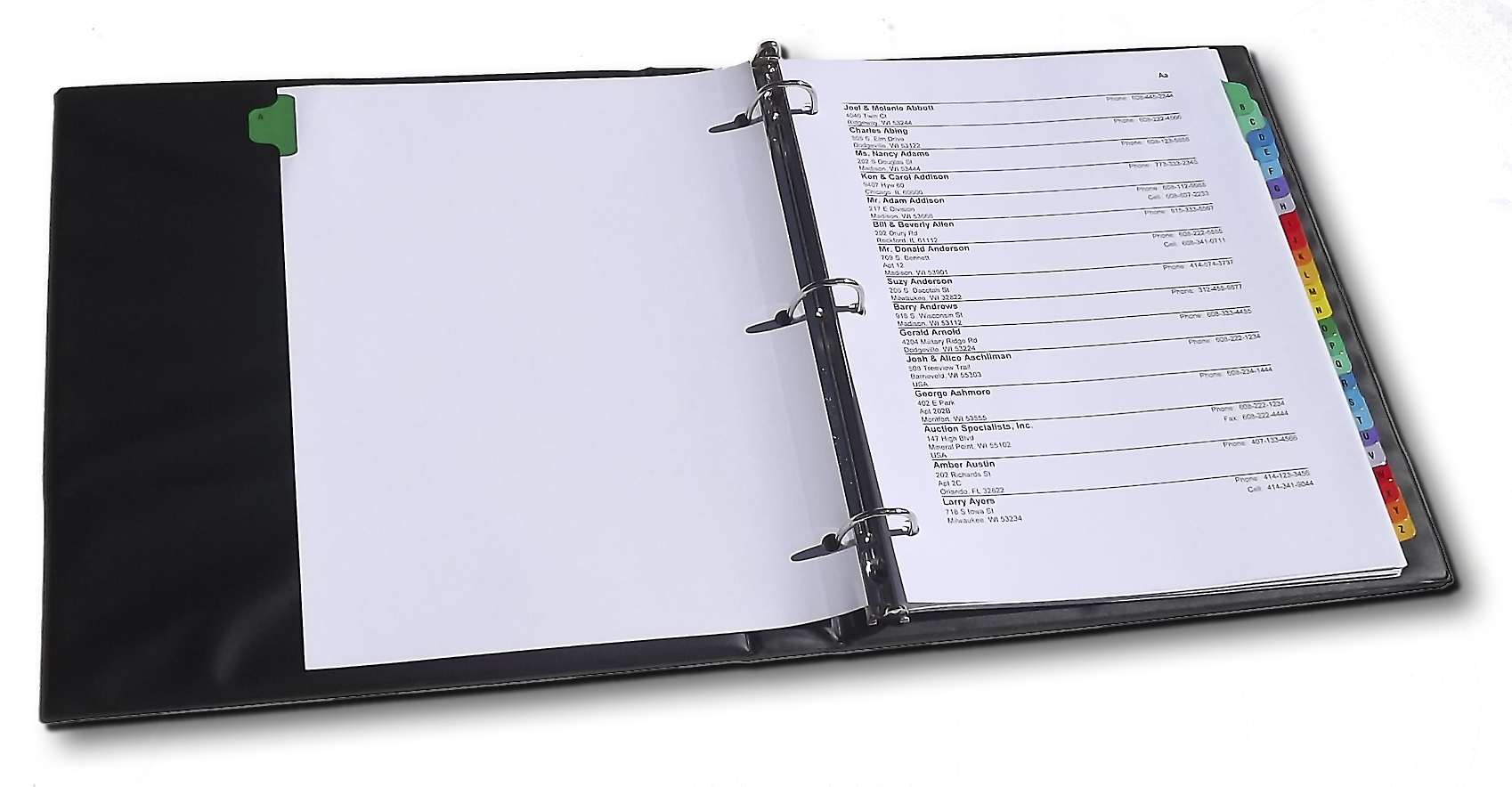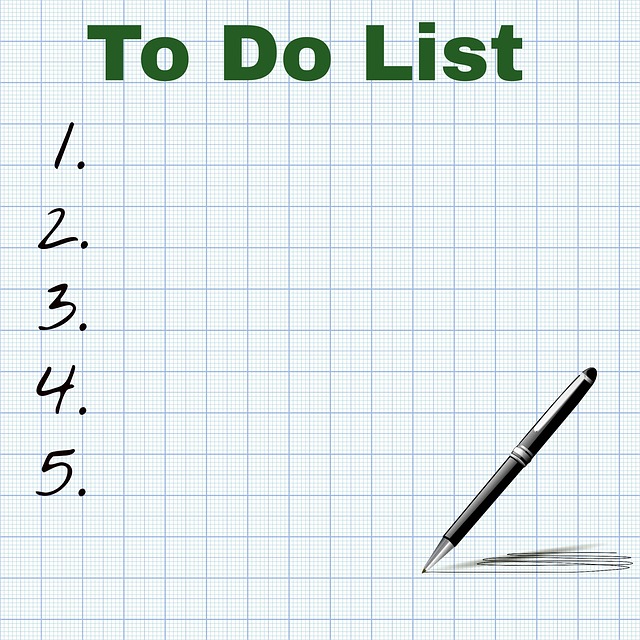
1: Get Organized
2: Learn the Basics
3: Form a Strategy
4: FamilySearch Record Searches (FS)
5: FamilySearch Research Tools (FS)
6: Develop Search Skills
7: Solve Problems
8: Family History Trips
9: FamilySearch Places, Solutions Gallery (FS)
10: Where Am I From? (FS)
11: Reading Handwriting |
Goldie May
 Translation Tips
Music
Translation Tips
Music

![]()
Project 4: Discover
Goal 1: Get Organized for Research

Note : For an overview of research in The Family History Guide, see the Research Intro page.
Goal 1: Get organized for research. Vault
Taking the time to get well-organized now will save you time later, and it will help you research your ancestor lines efficiently. Here is a good overview of getting organized with your genealogy materials.
Choices
A Organize your materials.
Summary
- Being organized while working on genealogy will help prevent duplicate research and make it clear where all information came from.
- A physical binder with dividers for subcategories can help in organizing research and making research aids easily accessible.
- Having a filing system (digital or physical) will help organize data and findings. Organizing by locality, then record type, then family line is one way many people prefer to arrange their documents.
- Here are some tips to get started with organizing your genealogy.
 FS: Organize Your Genealogy - 2021
FS: Organize Your Genealogy - 2021
 FL—Family History & Getting Things Done: Part 3, Organization - 2019
FL—Family History & Getting Things Done: Part 3, Organization - 2019 - Get a research binder and add page dividers in it, by geographic place of research or family surname.
- Determine your own sub-categories within the dividers, such as maps, how-to's, information contacts and websites, where to order records, printed forms, brief blog posts and articles, etc.
- Watch this video for tips on creating a research binder.
 Family History Organization—13:17 - 2017
Family History Organization—13:17 - 2017

- Learn how a research notebook helps with organizing genealogy.
 How a Research Notebook Can Keep You Organized - 2011
How a Research Notebook Can Keep You Organized - 2011 - Learn how to handle inherited genealogy materials.
 With to Do with Family History You've Inherited—10:26 - 2022
With to Do with Family History You've Inherited—10:26 - 2022

Research Binders
Research Organization
- Use these tips to help you stay organized with your research.
 FS—Organizing Your Files
FS—Organizing Your Files
 BYU—Organizing Genealogy Files—15:25 - 2015
BYU—Organizing Genealogy Files—15:25 - 2015

- Here are additional ideas for organizing your research and your findings.
 AA—Getting Organized: Tips to Help You
AA—Getting Organized: Tips to Help You
 AC—Organizing Research Info—19:00 - 2012
AC—Organizing Research Info—19:00 - 2012
- Here are tips on using filing systems for genealogy.
 My Genealogy Digital File Folder Organization - 2015
My Genealogy Digital File Folder Organization - 2015
 AJC—Organize Your Genealogy: Tips from a Professional Organizer—6:58
AJC—Organize Your Genealogy: Tips from a Professional Organizer—6:58 - Explore the Organize Your Family History blog site for additional ideas and interviews about staying organized with your genealogy.
- Learn about using Google Drive to organize your genealogy.
 RT—Organize Your Research with Google Drive - 2019
RT—Organize Your Research with Google Drive - 2019 - Here is an approach from Goldie May software to help you organize notes and research findings.
 RT—Keep your research organized, at home, in a FamilySearch Center, or at a library or archive—18:38 - 2024
RT—Keep your research organized, at home, in a FamilySearch Center, or at a library or archive—18:38 - 2024
- * Good: Write down key learnings from the article in this Choice.
- * Proficient: Same as above. Then create a research binder and organize your papers and materials in it.
B Create and use to-do lists to keep on track with your research.
This helps you remember where to begin and how to stay on target with your goals.
Summary- To-do lists with small but focused tasks will help you achieve research goals.
- Electronic or physical to-do lists are both viable ways to track your progress.
- Decide on small, focused tasks for your to-do list. Make sure your tasks support the goals you are working on.
- Use an electronic to-do list (Outlook, iPhone, word processing document, or spreadsheet) or a paper-based list.
- To get started with the FamilySearch To-Do List, a) On the www.familysearch.org page, find To-Do List (right side); b) In the "Add an Item" box, type the task you want to keep track of; and c) Click Add.
- To mark a FamilySearch To-Do List item as completed, click its check box. To hide or show the item, click Hide or Show. To delete an item, move the pointer to the right-hand edge of the item and click the red "X".
- For tips on using the Ancestry To-Do List, see Choice C in Ancestry, Project 4: Goal 7.

Resources
- This article explains how to turn genealogy clues into "to do's".
 RT—Turning Genealogy Clues into Genealogy To Do's - 2019
RT—Turning Genealogy Clues into Genealogy To Do's - 2019 - Learn how checklists can aid in your research tasks.
 How Genealogy Checklists Will Improve Your Research
How Genealogy Checklists Will Improve Your Research - Study these videos for tips on writing down research learnings and keeping effective to-do lists.
 AC: Write It Down—27:00 - 2013
AC: Write It Down—27:00 - 2013

 AC—Genealogy ToDo Lists—19:57 - 2014
AC—Genealogy ToDo Lists—19:57 - 2014
- * Proficient: Decide on a to-do list format and populate it with the family history tasks you need to accomplish in the coming week.
C Use notes, logs, and software to stay organized as you research.
Summary
- Research logs are essential in tracking what was searched, where was looked, and what was found.
- Providing as much information as possible when citing a document is important to help find it again.
- Taking notes while you research will help you quickly recall relevant information. Make sure to record sources, use a person’s full name, and carefully pay attention to dates.
- Store the records you're working with in several places, such as FamilySearch's Source Box.
Vault
Notes and Logs
- Learn about taking effective notes as you do research.
 GC—Taking Notes in Genealogy
GC—Taking Notes in Genealogy
 GTV—Research Notes—7:28 - 2018
GTV—Research Notes—7:28 - 2018
- Here are some tips on improving your note-taking skills.
 AJC: Taking Better Notes in Your Genealogy Research - 2020
AJC: Taking Better Notes in Your Genealogy Research - 2020 - Use research logs to track your progress.
 BYU—Research Logs—6:50 - 2014
BYU—Research Logs—6:50 - 2014

 FS—Research Logs
FS—Research Logs - Learn how to effectively combine research logs with your research plan.
 GTV: Research Logs, Episode 8—7:36 - 2018
GTV: Research Logs, Episode 8—7:36 - 2018
- Here are some tips on writing genealogical reports for your research.
 Writing Genealogical Reports
Writing Genealogical Reports - Store lists of records you are working on in the FamilySearch Source Box or the Ancestry Shoebox. You can also use a spreadsheet, such as this downloadable Document Tracker from Fortify Your Family Tree.
Software
- Learn how to use spreadsheets to organize your genealogy research.
 RT—Using Spreadsheets to Track and Organize Your Research - 2019
RT—Using Spreadsheets to Track and Organize Your Research - 2019 - Learn how Google Docs and Google Sheets can help you organize your research.
 RT—Google Docs and Google Sheets for Genealogists—42:13 - 2024
RT—Google Docs and Google Sheets for Genealogists—42:13 - 2024
- Learn how to create research logs with Airtable, a hybrid spreadsheet/database.
 FL—Airtable Research Logs - 2020
FL—Airtable Research Logs - 2020 - Learn how to use Evernote for organizing genealogy.
 FHD—Master Genealogy Organization in an Hour with One Online Program
FHD—Master Genealogy Organization in an Hour with One Online Program
 Evernote for Genealogy: What It Is, & Why You Would Use It—5:21 - 2015
Evernote for Genealogy: What It Is, & Why You Would Use It—5:21 - 2015
- Learn more about Evernote techniques for genealogy.
 FL—Using Evernote for Genealogy Research - 2018
FL—Using Evernote for Genealogy Research - 2018 - If you use Microsoft Office, take advantage of OneNote for organizing your genealogy.
 FS—Organizing Your Genealogy Using Microsoft OneNote
FS—Organizing Your Genealogy Using Microsoft OneNote
 Get Organized with OneNote
Get Organized with OneNote - Learn how to use Google Chrome shortcuts to accelerate your research.
 RT—How to Create Google Chrome Shortcuts for Faster Genealogy Research—4:58 - 2021
RT—How to Create Google Chrome Shortcuts for Faster Genealogy Research—4:58 - 2021
- * Proficient: Write down the key learnings from the Choice. Then set up a research log and begin using it to track your research.
D Keep track of your correspondence with others and write effective request messages.
Summary
- Carefully tracking correspondence research with each individual will ensure that research isn’t duplicated.
- Ongoing communication between everyone involved in the research process is key.
- Read this article for tips on tracking your correspondence with others. See also the Correspondence Record form in Choice E.
 Genealogy Correspondence Sheets: How Do I Get Started? - 2016
Genealogy Correspondence Sheets: How Do I Get Started? - 2016 - Here are tips for writing to family members and organizations.
 Correspondence to Family Members
Correspondence to Family Members
 GC—Tips for Writing to Institutions
GC—Tips for Writing to Institutions - You can use these form letters and tips when writing to people internationally.
 GC—Form Letters for Requesting Information
GC—Form Letters for Requesting Information - Make use of email or text-message folders for electronic correspondence.

- * Good: Identify a family member or organization you would like to write to for genealogy information. Using the tips in this Choice to guide you, write to that person about your needs or questions.
- * Proficient: Same as above, corresponding with at least three people.
E Use pre-printed charts to help you organize your research efforts.
Summary
- Track the names of possible ancestors.
- Track the resources you have explored.
- Summarize the data you researched.
- Track your correspondence with others.
- Track sources for individuals and families.
- Use free genealogy research forms from Family Search and other resources. Here are some useful sources:
- FamilySearch
- National Archives and Record Administration
- Archives.com
- Ancestry.com
- Genealogy Bank to record information on members of a family you are researching.
- The Baileys
- FamilyTree Magazine
- Price Genealogy
- Family Education
- Cyndi's List
- Learn how to stay organized with family tree charts and software.
 GTV—Stay Organized with Family Tree Charts and Software—6:10 - 2018
GTV—Stay Organized with Family Tree Charts and Software—6:10 - 2018
- * Good: Use 2 of the pre-printed forms in this Choice to track at least one ancestor.
- * Proficient: Use at least 5 of the pre-printed forms in this Choice to track more than one ancestor.